
There’s nothing wrong with flow trails, says Dave Cizmas. They are fast, fun, and they get people of all walks of life out on more trails, but there are a lot of flow trails in and around Duluth, Minnesota. In 2018, as he surveyed the Split Rock Wilds, he knew he had a good opportunity on his hands. There is only about 500′ of elevation gain, but with rocky, undulating terrain, it presented an exciting canvas.
Though initially proposed six or seven years ago, progress had stalled on Split Rock Wilds. Lake County approached Cizmas in 2018 about getting the ball moving again and after seeing the area and getting the OK from the board of commissioners, he accepted. Cizmas, now a forester with Lake County Forestry explained the unique opportunity for the Split Rock Wilds trails to the board of commissioners.
“While [flow trails are] great to get everyone out there, I missed the trails that I found in other parts of the country that actually required a bit of skill and were really challenging,” said Cizmas. And likely, there were many riders like him in the area who wanted rockier trails.
On top of being a network with a number of trails for advanced riders, the Split Rock Wilds natural trails will be off the beaten path for a more remote and backcountry feel. The trails are about an hour north of Duluth.
On a roll


Since 2019, Cizmas along with their contractor Rock Solid Trails have built 21 miles of trail. The county had a soft opening last year, but the trails will officially open this summer in July. Considering the rough and rocky land, they’ve moved at a pretty good pace. Having a mountain biker and a mountain bike advocate embedded in the county helped considerably, he says. Cizmas has been a board member of COGGS, the Cyclists of Gitchee Gumee Shores, which helped build the Duluth Traverse trail, and he is a board member for Spirit Mountain.
While every state is different, “Being a part of government, and then knowing exactly what permit we needed and when helped dramatically and helped that go a lot quicker,” Cizmas says. He learned smart approaches to trail advocacy through COGGS, knew what kind of paperwork they needed to keep trail unrolling, and had funding for the project.
Cizmas notes that the land commissioner and the county board was also interested in his vision and willing to take the risk after seeing so many other communities benefit from recreational trails. Having the environmental analysis done before he started and a contractor as capable as Rock Solid helped too.
Much of their funding for the project was bridged by chance. On a warm winter day in 2019, Tracy Paradise and a few friends of hers were fat biking in Duluth when she saw Cizmas chipping away at some trail work. She struck up a conversation with Cizmas and told him that she runs the One Track Mind Foundation (OTM), an organization with strong funding and a big heart for mountain bike trails.
“It might be your lucky day,” Paradise told Cizmas. Since then, OTM has donated over $250,000 to the efforts at Split Rock and plans to give $100,000 per year for the next three years. Paradise involves kids in all of OTM’s projects from different conservation or youth corps’ around the country. OTM has invested in trails in Minnesota, Idaho, Montana, and Colorado.
No boring trails
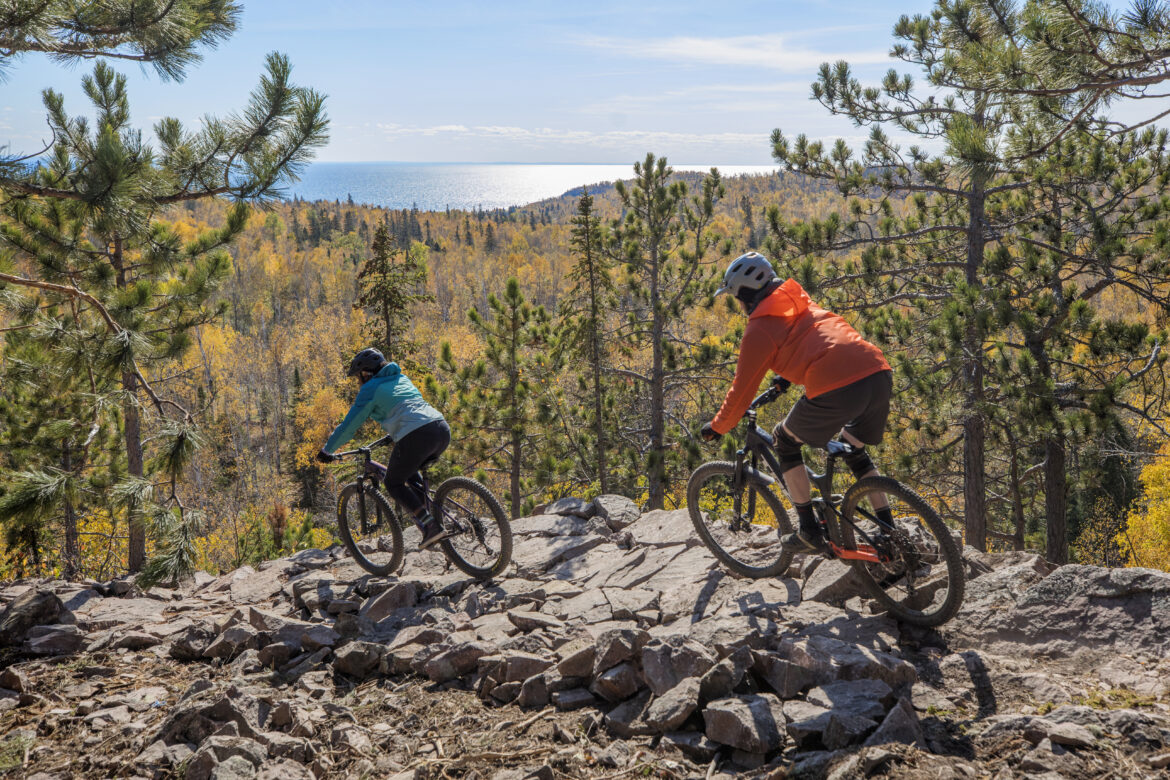
Not everything will be a black diamond. The Split Rock Wilds trails will front load the network with beginner and intermediate trails, close to the campgrounds and easier for families or intermediate riders to access. As you get farther up the shore and away from the campgrounds, the trails will increase in difficulty.
The technical trails are built with flow in mind, but aren’t necessarily flow trails. They’re rocky, natural, and can be slow-going, built to “Feel part of the terrain instead of on top of the terrain,” says Cizmas.
There’s 21 miles of singletrack right now and there can be up to 50 miles, although getting to that number may take some time. Some years they’ll build more, and then some years will be less, depending on funding and resources. The goal is quality, not quantity.
“We don’t want to build trail for the sake of having miles,” said Cizmas. The determination for more trail will be based on what’s been built and what would further compliment the system and create a great user experience. “My goal is zero boring trail,” he says. “You may not love it, but you won’t be bored.”


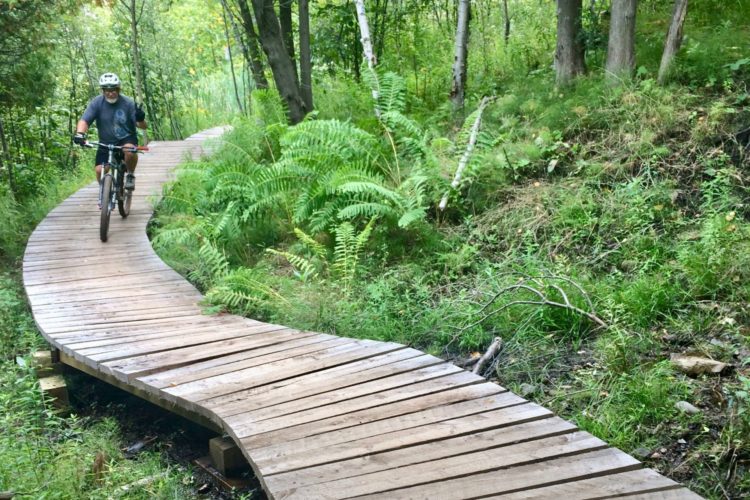


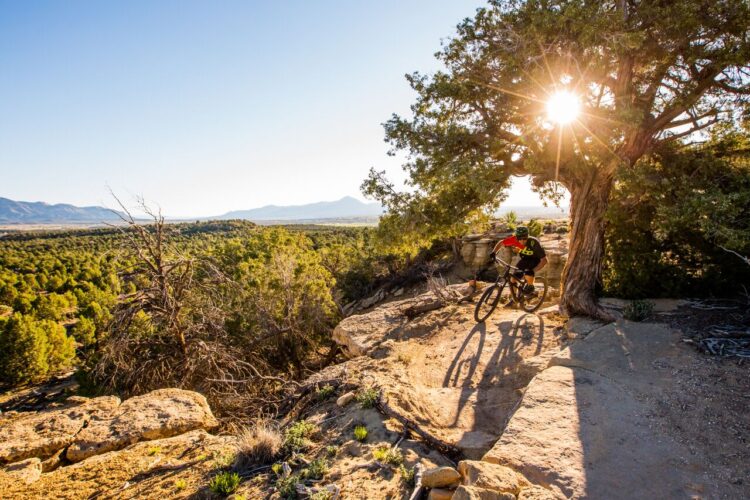
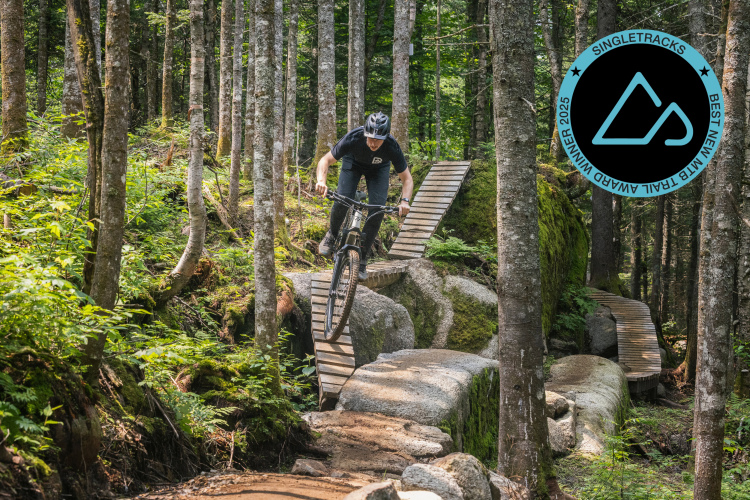


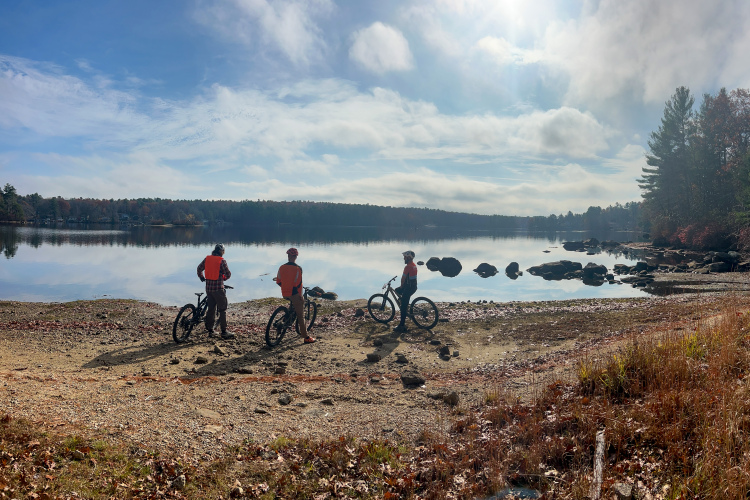

3 Comments
Apr 14, 2022
This right here. While a lot of trails have been built to get people interest more recently, a lot of the technical aspect of riding that I miss seems to be making a return. Not that a 3-1/2 hour drive is that far, but I do wish I lived closer.
Apr 13, 2022
Apr 13, 2022
Britton Peak is awesome as well, with more "flow".
From there you could ride Duluth, Redhead MTB park, Tioga Recreation and Cuyuna.Your legs are guaranteed to fall off after all that !